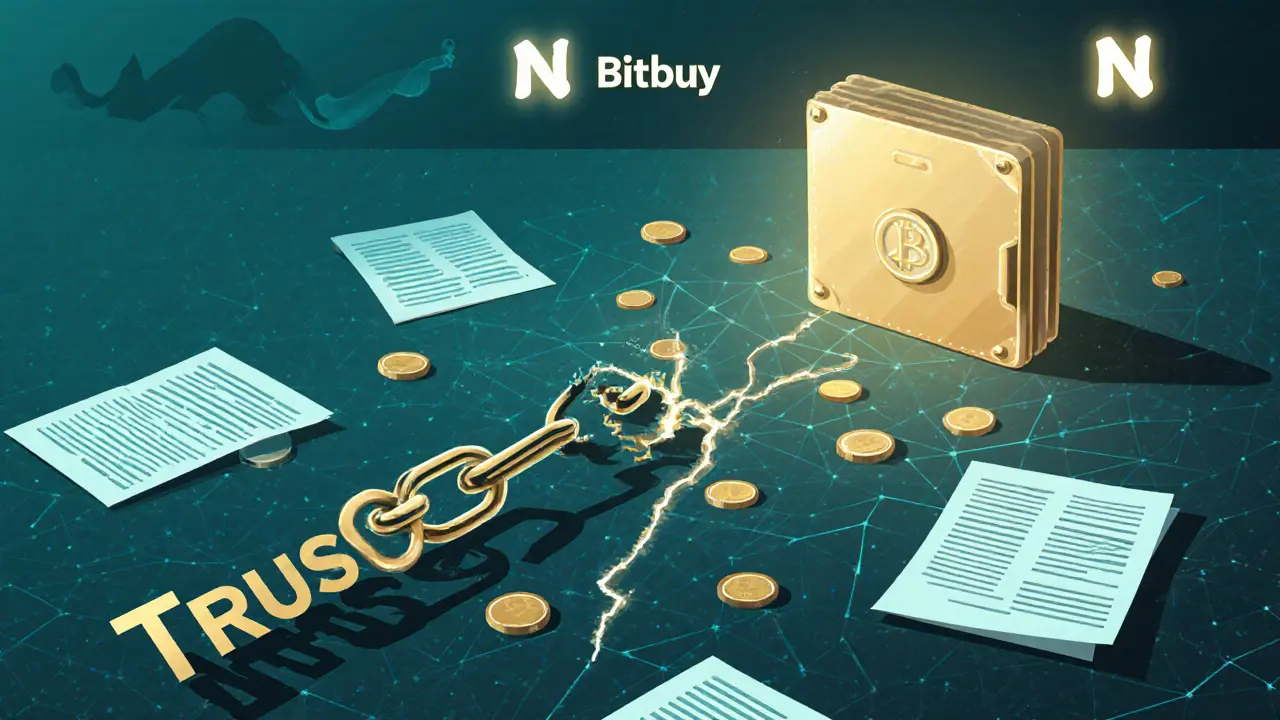Catalyx wasn’t just another crypto exchange. For a brief moment, it was Canada’s most promising homegrown platform - fast, clean, and built for real traders. But by January 2024, it was gone. Bankrupt. Frozen. A cautionary tale buried under $14 million in missing client funds and regulatory violations. If you’re thinking about using a centralized exchange, especially in Canada, you need to know what happened to Catalyx - and why it matters for your money.
What Catalyx Actually Offered
Before the collapse, Catalyx gave users a straightforward way to trade crypto with Canadian dollars. You could buy Bitcoin, Ethereum, Cardano, or USDT with CAD, or swap between coins directly. The platform supported around 40 cryptocurrencies, which was solid for a mid-sized exchange. No exotic tokens, no junk coins - just the major ones most people actually use. Trading fees were simple: 0.75% per trade, no hidden spreads. That’s higher than Binance or Kraken, but fair for a Canadian platform trying to compete with global giants. You knew exactly what you’d pay. No surprises. The interface was built with modern tech - Elixir, GraphQL, PostgreSQL - designed to be fast and stable even under heavy load. It wasn’t flashy, but it worked. Advanced traders got real tools: live order books, candlestick charts, limit and stop orders. It wasn’t a professional-grade terminal like TradingView, but it was enough for active users. The referral program was aggressive - earn up to 20% of your friend’s trading fees, forever. That helped them grow fast.How Fast It Grew (And Why It Was a Red Flag)
In early 2021, Catalyx exploded. Trading volume jumped 1,542% in one quarter. In March 2021 alone, monthly trading volume went from $14.88 million to $28.44 million. Deposits more than doubled. Revenue jumped 76% in a single month. That kind of growth looks great on paper - until you ask how it happened. Fast growth in crypto often means one of two things: either the product is truly amazing, or someone’s cutting corners. In Catalyx’s case, it was both. The team pushed hard to scale, but they didn’t scale their controls. No one was watching the money. No one was auditing the wallets. And worst of all, the CFO had direct access to client funds.The CFO Who Vanished With $14 Million
The core of Catalyx’s collapse wasn’t a hack. It wasn’t a market crash. It was fraud - internal, deliberate, and ignored. Jae Ho Lee, the Chief Financial Officer, allegedly withdrew over $14 million in client crypto assets. Not from a compromised wallet. Not from a system glitch. He took it directly, using his position to move funds out of trust accounts. The Alberta Securities Commission (ASC) says he did it over months, hiding the theft with falsified records. Worse, the CEO, Hyuk Jae Park, knew about it by November 24, 2023. But he didn’t report it to regulators until December 21. That’s a month of silence while clients kept depositing money, thinking everything was fine. When Lee stopped answering emails, the company tried to get access to wallets and bank accounts. No response. On December 28, 2023, trading stopped. By January 2024, Catalyx was in receivership.
Why This Matters for You
Catalyx wasn’t a rogue operation. It was registered with FINTRAC. It followed Canadian rules - on paper. But registration doesn’t mean safety. It just means they filled out the forms. The real failure was in execution: no separation of duties, no third-party audits, no real oversight of employee access to funds. This is the hidden risk of centralized exchanges. Your coins aren’t in your wallet. They’re in theirs. And if the people running it are dishonest - or incompetent - your assets vanish. No blockchain can save you. No smart contract can reverse it. Once it’s gone, it’s gone. Catalyx froze accounts too - but only after the fraud was exposed. Before that, they didn’t arbitrarily lock users out. That’s not the problem. The problem is that they let one person control everything. That’s not a system. That’s a single point of failure with a title.What You Should Do Now
If you’re still using a Canadian exchange, ask yourself: Who controls the keys? Who audits the funds? Is there a clear separation between operations and finance? If you can’t answer those questions, you’re taking a risk. For most people, the safest move is to use a regulated exchange with a proven track record - like Bitbuy or Newton - and keep only what you’re actively trading on the platform. Everything else? Move it to a hardware wallet. Cold storage isn’t sexy, but it’s the only way to truly own your crypto. Also, don’t fall for referral bonuses that seem too good to be true. Catalyx’s 20% referral program helped them grow fast - and helped them hide the fraud longer. Incentives are great. But they shouldn’t override due diligence.The Aftermath: What’s Left
As of November 2025, Catalyx is dead. The website is offline. Customer support is gone. The bankruptcy process is ongoing. The ASC hearing is scheduled for September 2025 in Calgary. Clients may get some money back - but likely not all. The legal battle will drag on for years. There’s no recovery fund. No insurance. No FDIC-style protection. Canadian crypto exchanges aren’t covered by deposit insurance. That’s not a loophole. That’s the rule. The only winners? The lawyers. The regulators. And the people who learned the hard way that trust doesn’t equal safety.
How Catalyx Compared to Other Canadian Exchanges
| Feature | Catalyx | Bitbuy | Newton |
|---|---|---|---|
| Regulatory Status | FINTRAC registered, pre-registration undertaking | FINTRAC registered, full compliance | FINTRAC registered, full compliance |
| Trading Fees | 0.75% flat | 0.2%-1.5% (maker/taker) | 0.2%-1.5% (maker/taker) |
| Supported Cryptocurrencies | ~40 | ~20 | ~15 |
| Fiat Support | CAD only | CAD only | CAD only |
| Asset Protection | No third-party audits; CFO controlled funds | Segregated client accounts; regular audits | Segregated client accounts; regular audits |
| Customer Support | Responsive pre-collapse | 24/7 live chat | 24/7 email and chat |
| Current Status | Bankrupt, operations ceased | Active, growing | Active, growing |
What You Can Learn From Catalyx
The Catalyx collapse wasn’t a black swan. It was predictable. Here’s what you can take away:- Registration ≠ Safety: FINTRAC registration is a baseline. It doesn’t mean the company is trustworthy.
- Know Who Controls the Keys: If a single person has access to client funds, you’re at risk.
- Ask for Audits: Reputable exchanges publish third-party audit reports. Catalyx never did.
- Don’t Chase High Returns: A 20% referral bonus is a red flag if the platform’s internal controls are weak.
- Keep Most of Your Crypto Off Exchanges: Use cold storage. Always.
Catalyx didn’t fail because crypto crashed. It failed because people stopped caring about the basics: accountability, transparency, and separation of duties. That’s not a crypto problem. That’s a human problem.
Is Catalyx still operating?
No, Catalyx ceased operations on December 28, 2023, and was placed into receivership in January 2024. The website is offline, customer support is gone, and the company is bankrupt. Any claims to being active are false.
Can I get my money back from Catalyx?
Possibly, but not likely in full. The bankruptcy process is ongoing, and funds are being assessed by court-appointed receivers. Clients may receive partial repayment depending on recovered assets, but there is no guarantee. Unlike banks, crypto exchanges in Canada offer no deposit insurance.
Was Catalyx regulated?
Yes, Catalyx was registered with FINTRAC and had signed a pre-registration undertaking with the Alberta Securities Commission. But registration doesn’t mean compliance. The ASC later alleged the company violated its undertaking by failing to protect client assets and hiding fraud.
What made Catalyx different from other exchanges?
Catalyx stood out for its fast, one-click trading interface and aggressive referral program. Technically, it was well-built with modern tools like GraphQL and Elixir. But unlike competitors like Bitbuy or Newton, it lacked proper internal controls - especially around employee access to client funds.
Should I avoid Canadian crypto exchanges now?
No, but be selective. Stick to exchanges with clear audit reports, segregated client accounts, and public regulatory compliance records. Avoid platforms that don’t disclose how they protect your assets. Catalyx wasn’t the first, and it won’t be the last to fail - but you can avoid the same fate by asking the right questions.


4 Responses
Oh wow, another 'regulatory compliance' fairy tale where the CFO just magically walks off with $14M like it's a Netflix docu-drama. 🤡 Let me guess - the CEO was too busy doing yoga and chanting 'decentralize everything' while his CFO played Monopoly with client wallets. And we wonder why crypto is a casino with extra steps. No audits? No separation of duties? That's not negligence - that's a crime scene with a business license. The only thing more pathetic than Catalyx is the people who still think 'FINTRAC registered' means 'safe.'
man i just lost my first 2k in crypto last year and was scared to touch it again but this post actually helped me understand what went wrong. not all exchanges are like this, right? i think i'll stick with bitbuy now, they seem way more legit. thanks for breaking it down so simply 😅
Wow. Catalyx was built on Elixir and GraphQL? That's cute. Like using a Ferrari to haul dirt. Anyone who trusted a mid-tier Canadian exchange with 'modern tech' and zero audits deserves to lose everything. Real traders use self-custody. Or at least Coinbase Pro. Not some boutique platform with a 20% referral bonus that smells like a Ponzi pyramid with a UI upgrade. You don't need a PhD to see this coming - just common sense and a functioning brain.
Dear friends, this is a very important lesson. In life, we must always check who holds the keys. If one person has control over everything, it is not a system, it is a trap. I suggest everyone to use only regulated exchanges with clear audit reports. Also, cold storage is best. Always. Thank you for sharing this.